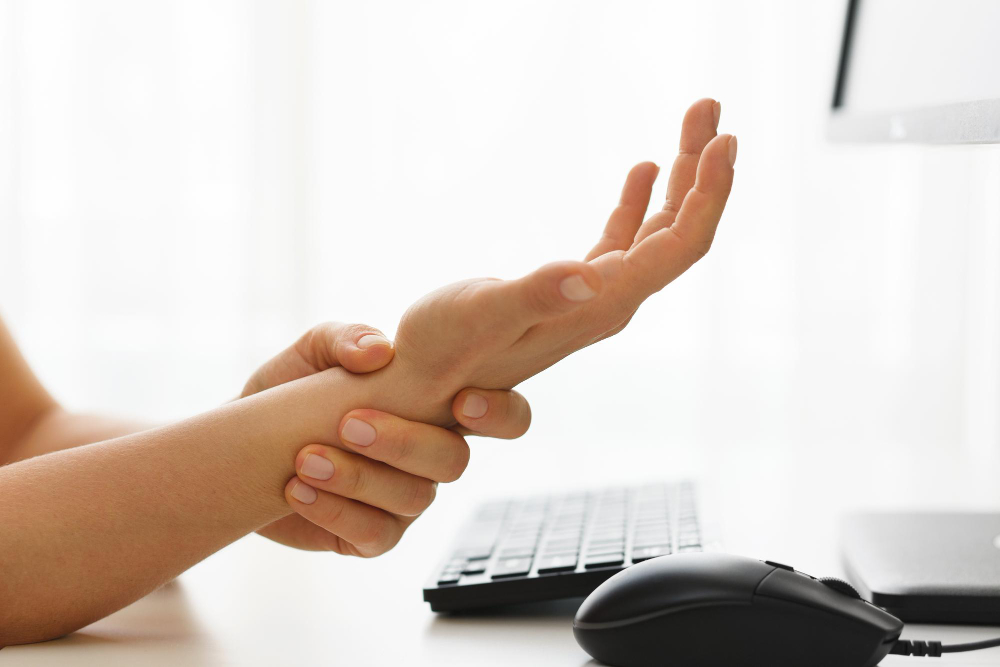The Complete Guide to Carpal Tunnel Syndrome Treatment Options

Carpal Tunnel Syndrome (CTS) is a common, yet often misunderstood, condition that affects the hand and wrist. For many, especially those who spend long hours typing or performing repetitive hand and arm movements, CTS can be an intrusive and painful problem that demands effective treatment strategies. If you're located in Orange City, FL or nearby areas, finding the right orthopedic surgeon is crucial for handling CTS in the best possible way. In this comprehensive guide, we'll explore various treatment options to help you or your loved ones make an informed decision about managing CTS.
Understanding Carpal Tunnel Syndrome
Before we dig into treatment methods, it's essential to have a solid grasp of what Carpal Tunnel Syndrome really is. CTS is a condition where the median nerve, which runs from the forearm into the palm of the hand, becomes compressed at the wrist within the carpal tunnel. This compression leads to symptoms such as:
- Numbness or tingling in the thumb, index and middle fingers
- Weakness in the hand or a tendency to drop objects
- A burning sensation that may radiate up your arm
- Difficulty gripping or making a fist
Conservative Treatment Approaches
Upon diagnosis, clinicians often recommend starting with conservative treatments before exploring more invasive options. These treatments are aimed at relieving the symptoms of CTS and include:
Wrist Splinting
Wearing a splint to keep your wrist in a neutral position can help to reduce compression on the median nerve.
Medications
Over-the-counter pain relievers like aspirin, ibuprofen, and other nonsteroidal anti-inflammatory drugs can provide short-term relief. Additionally, diuretics or corticosteroids can ease pressure on the nerve and alleviate symptoms.
Hand Therapy
Exercising and stretching your wrists can strengthen the muscles, reducing the severity of the CTS symptoms.
Alternative Treatment Strategies
In addition to traditional medical treatments, alternative therapies can also provide relief. These may include:
Acupuncture
Acupuncture involves the insertion of very fine needles through the skin at specific points on the body. It's believed to help release natural painkillers and stimulate the body's natural healing abilities.
Chiropractic Care
Chiropractic adjustments to the wrist and upper spine can reduce the risk of compression on the median nerve. Chiropractors may also use ultrasound therapy and splints to treat CTS symptoms.
Surgical Intervention
When conservative and alternative treatments fail to provide relief, surgical options become a consideration. The surgeries for Carpal Tunnel Syndrome are typically outpatient procedures that can be performed with local anesthesia. There are two main types:
Open Release Surgery
During open carpal tunnel release surgery, the surgeon makes an incision in the palm of your hand. By cutting the carpal ligament, the roof of the carpal tunnel, they can relieve the pressure on the median nerve.
Endoscopic Surgery
This minimally invasive procedure involves making one or two incisions in your palm and wrist and inserting a camera and tools to cut the carpal ligament. Compared to open release surgery, endoscopic procedures tend to offer faster recovery times and less scarring.
Post-Surgery Rehabilitation
Rehabilitation after CTS surgery is critical for a full recovery. This typically involves:
Physical Therapy
A physical therapist will show you how to do exercises to strengthen your hand and wrist. Therapy can also include massage, heat, and ultrasound to improve blood flow and facilitate healing.
Ergonomic Changes
After surgery, it's crucial to make changes to how you work and perform everyday tasks. Ergonomic tools and methods can help to reduce the chance of CTS returning.
The Role of an Orthopedic Surgeon
Choosing the right orthopedic surgeon is a significant step in treating Carpal Tunnel Syndrome. The skills and experience of the surgeon can affect the success and recovery process of your treatment. If you're in Orange City, FL, it's important to find a surgeon specializing in hand and upper extremity surgery to ensure the best care possible.
Selecting Your Surgeon
When selecting a surgeon, consider their experience with CTS surgery, patient outcomes, and any special training or certifications. Don't hesitate to ask for referrals or seek a second opinion.
Preparing for Surgery
Before the procedure, your surgeon will discuss what to expect, including risks, benefits, and recovery time. They may also instruct you about pre-surgery preparations, such as fasting the night before and what medications to avoid.
Aftercare
Your surgeon should provide detailed aftercare instructions, including when to start moving your hand, how to care for the incisions, and when to follow up for a post-operative checkup.
Long-Term Management of Carpal Tunnel Syndrome
Following treatment, it's important to manage CTS for the long term. This generally includes:
Following a Healthy Regimen
Maintain a healthy weight and lifestyle. Staying active can prevent the symptoms from returning or becoming chronic.
Follow-Up Care
Attend all follow-up appointments with your surgeon or hand therapist. These will be essential for monitoring your recovery and any signs of symptom recurrence.
Lifestyle Changes
Make the necessary changes to your daily routine that will reduce stress and strain on your hands and wrists.
Recap and Conclusion
Carpal Tunnel Syndrome can significantly affect your quality of life. Thankfully, with the right treatment plan and the guidance of a skilled orthopedic surgeon, you can effectively manage and overcome its symptoms. From conservative therapies to surgical intervention, there is a range of options available. If you're looking for an orthopedic surgeon in Orange City, FL, consider the team at Central Florida Bone & Joint Institute as your partners in this journey. Remember, the key to successful treatment is early intervention and a commitment to post-treatment care. Whether it's through splinting, exercises, or surgical methods, relief is within reach. The decision to take action is the first step toward regaining control of your hand health. Contact Central Florida Bone & Joint Institute today for more information.